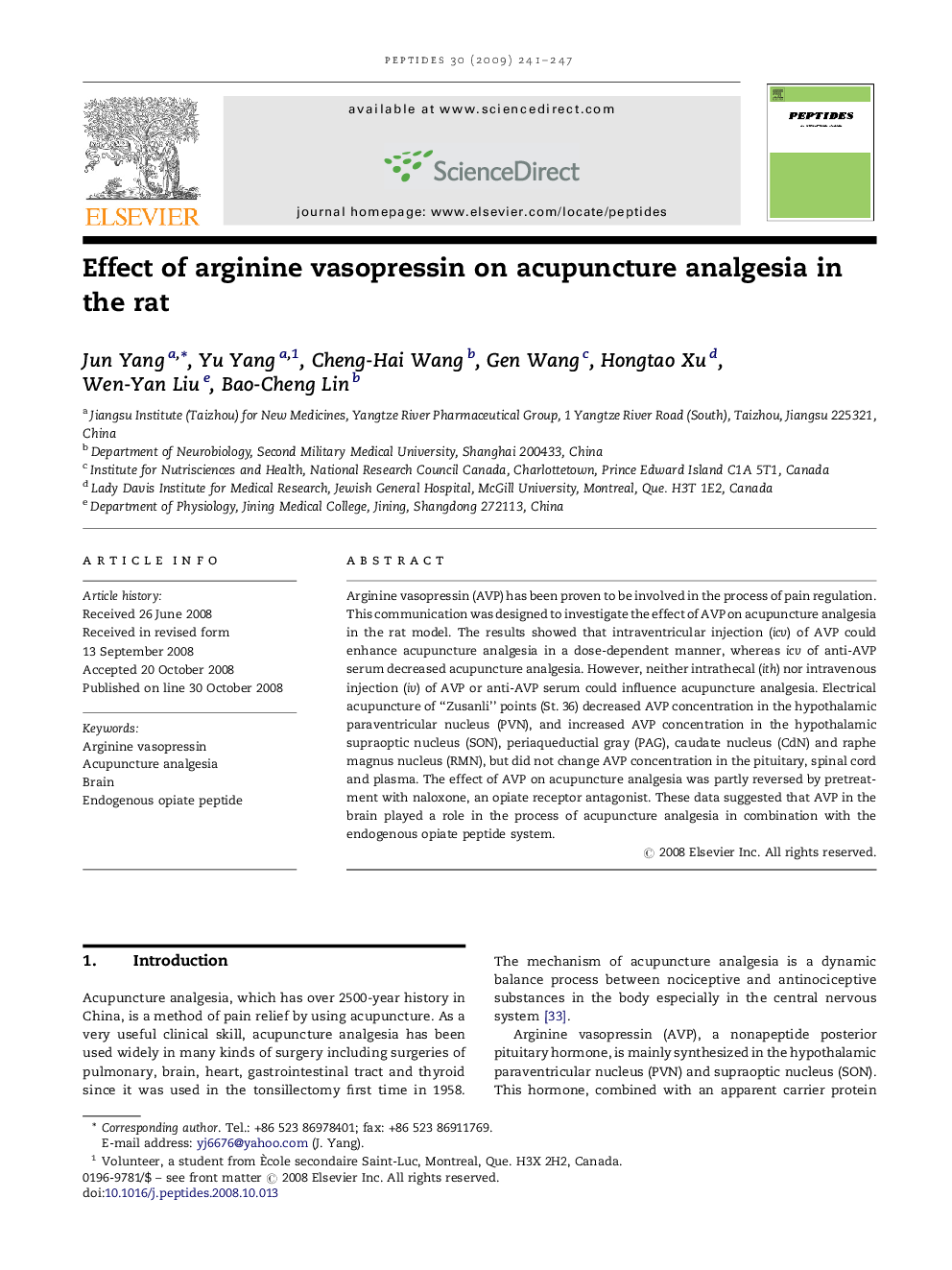| Article ID | Journal | Published Year | Pages | File Type |
|---|---|---|---|---|
| 2007211 | Peptides | 2009 | 7 Pages |
Abstract
Arginine vasopressin (AVP) has been proven to be involved in the process of pain regulation. This communication was designed to investigate the effect of AVP on acupuncture analgesia in the rat model. The results showed that intraventricular injection (icv) of AVP could enhance acupuncture analgesia in a dose-dependent manner, whereas icv of anti-AVP serum decreased acupuncture analgesia. However, neither intrathecal (ith) nor intravenous injection (iv) of AVP or anti-AVP serum could influence acupuncture analgesia. Electrical acupuncture of “Zusanli” points (St. 36) decreased AVP concentration in the hypothalamic paraventricular nucleus (PVN), and increased AVP concentration in the hypothalamic supraoptic nucleus (SON), periaqueductial gray (PAG), caudate nucleus (CdN) and raphe magnus nucleus (RMN), but did not change AVP concentration in the pituitary, spinal cord and plasma. The effect of AVP on acupuncture analgesia was partly reversed by pretreatment with naloxone, an opiate receptor antagonist. These data suggested that AVP in the brain played a role in the process of acupuncture analgesia in combination with the endogenous opiate peptide system.
Related Topics
Life Sciences
Biochemistry, Genetics and Molecular Biology
Biochemistry
Authors
Jun Yang, Yu Yang, Cheng-Hai Wang, Gen Wang, Hongtao Xu, Wen-Yan Liu, Bao-Cheng Lin,
